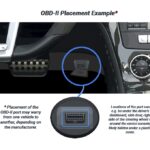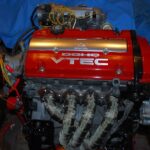The 1995 Dodge Dakota, falling within the transition period of OBD standards, often raises questions about OBD2 compatibility. Many owners wonder about the feasibility of converting their OBD1 system to OBD2. This article explores the possibilities and challenges of a 1995 Dodge Dakota Obd2 conversion.
Understanding the Conversion Process
A common approach to OBD1 to OBD2 conversion involves creating a custom sub-harness. This process essentially entails cutting the existing OBD1 connector and crimping new ends compatible with the OBD2 standard. In some instances, the pin configurations might be similar enough to allow for direct transfer from the OBD1 plug to the OBD2 plug. However, this requires careful examination and potentially adding missing wires, especially for components like transmission controls. Building a custom sub-harness is achievable, mirroring solutions available for other vehicle makes. The primary challenge lies in sourcing a male connector that perfectly matches the female OBD1 plug.
Potential Complications: Injectors and Cruise Control
While wiring at the ECM might remain consistent, Mopar’s frequent changes to injector types throughout the years present a potential hurdle. Different injectors utilize different connectors and boast varying flow rates, necessitating careful matching with the ECM. Mismatched injectors can lead to performance issues or even engine damage. Fortunately, injector conversion harnesses are available to address this compatibility issue.
Another critical consideration is the cruise control module. The challenge isn’t connecting the module to the ECM but rather the differing signaling methods between OBD1 and OBD2 systems. OBD1 employs multiple pins on the ECM for cruise control functions (on/off, set/resume), while OBD2 utilizes fewer pins with variable voltage signaling. Conversion harnesses typically incorporate resistors to adapt the signals and consolidate outputs to the appropriate OBD2 pins.
Conclusion
Converting a 1995 Dodge Dakota to OBD2 involves creating a custom sub-harness or potentially using an existing conversion harness. While seemingly straightforward, challenges arise with injector compatibility and cruise control signal adaptation. Addressing these issues requires careful planning, potentially including sourcing specific injector conversion harnesses and understanding the resistor configurations within the cruise control wiring. A successful 1995 Dodge Dakota OBD2 conversion hinges on meticulous attention to detail and a thorough understanding of both OBD systems.


